6 Features to Look for In a Procurement Platform


Key Takeaways:
Are you struggling to refresh procurement data in real time? Nearly 75% of companies face this challenge, making it harder to stay agile and make data-driven decisions.
By adopting the right procurement platform, you’ll do more than just streamline operations and unlock cost savings—we’re talking enhanced visibility, proactive risk management, and stronger supplier relationships.
This article explores six essential features that ensure your platform is built for long-term success, so let’s dive right in.
AI-powered procurement platforms process vast volumes of data, enabling advanced data analysis and decision-making.
These insights play a crucial role in identifying patterns in supplier performance and predicting trends, helping you choose the best suppliers and uncover hidden cost-saving opportunities.
With this in mind, it’s no surprise that nearly half of 1,000 procurement leaders surveyed in late 2023 had plans to implement AI capabilities within one year.
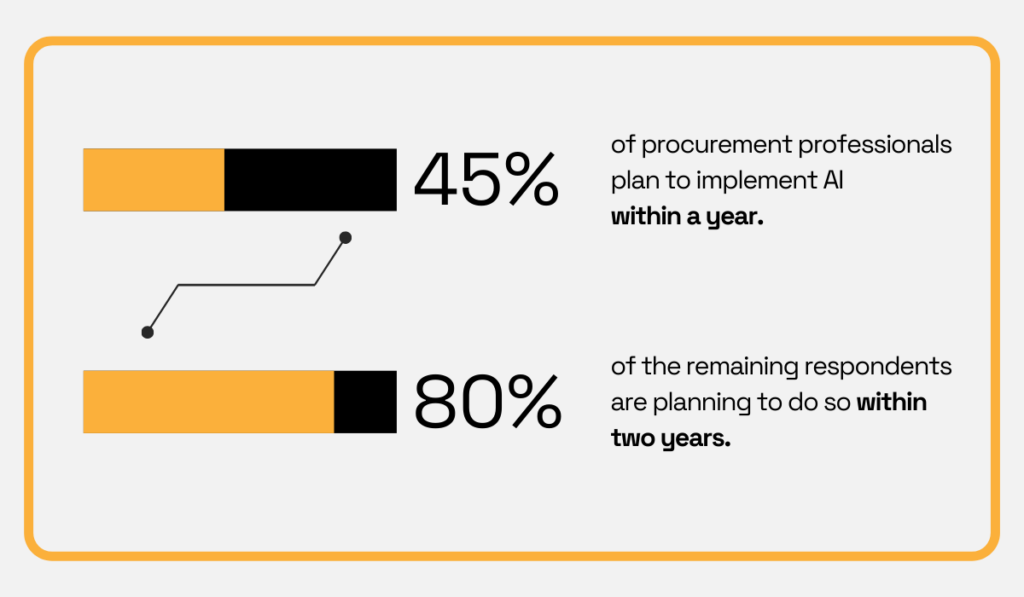
Illustration: Veridion / Data: Amazon Business
The 2025 report reveals a similar sentiment, with AI data analysis rated either very important or a top-three priority for 61% of decision-makers and 68% of senior leaders.
There’s only one possible conclusion: Future-proof procurement platforms must have AI capabilities.
Keith Hausmann, Chief Customer Officer at Globality, Inc., highlights that AI’s main advantage lies in its ability to offer entirely new perspectives from large volumes of unstructured data.
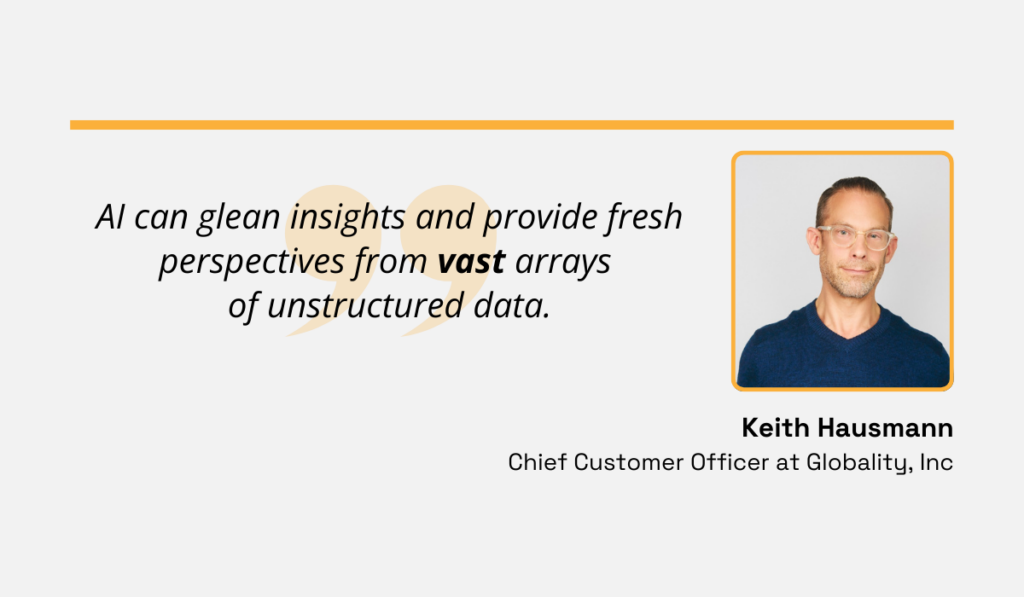
Illustration: Veridion / Quote: Procurement Magazine
In other words, you no longer need to comb through complex tables and custom spreadsheet models to gain critical insights into your procurement operations.
AI can easily detect process inefficiencies and suggest corrective actions based on historical data and real-time analysis.
Supplier sourcing provides another compelling use case.
AI features are becoming a staple among supplier sourcing solutions, helping organizations reach a broader pool of suppliers and find matches more quickly.
However, even AI-driven procurement platforms are likely to have limited access to reliable real-time data needed to make smart decisions.
This is where external data providers like Veridion come in.
Our supplier discovery solution, Scout, allows you to scour through an expansive global database updated weekly and dig up even the most niche suppliers that fit your needs perfectly.
What sets Veridion apart is not only the sheer number of suppliers across all industries but the granular, real-time data on a wide range of metrics.
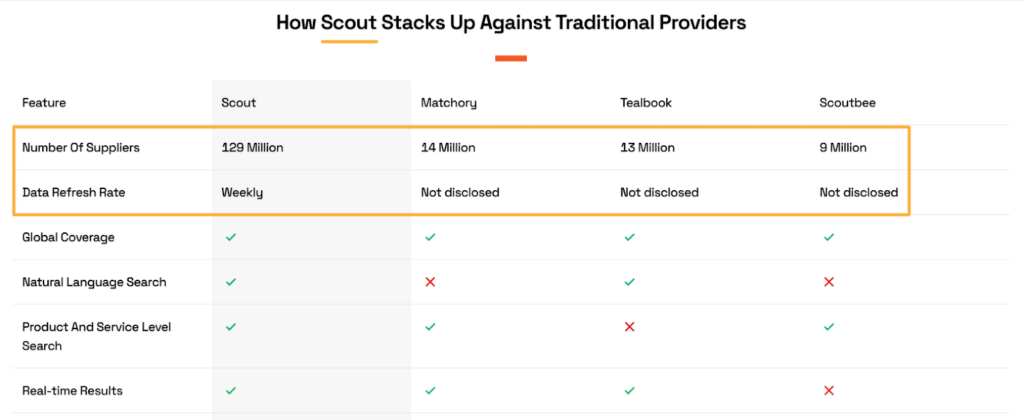
Source: Veridion
Moreover, features like advanced filtering and natural language search speed up the process further, yielding better results 20 times faster than manual searches.
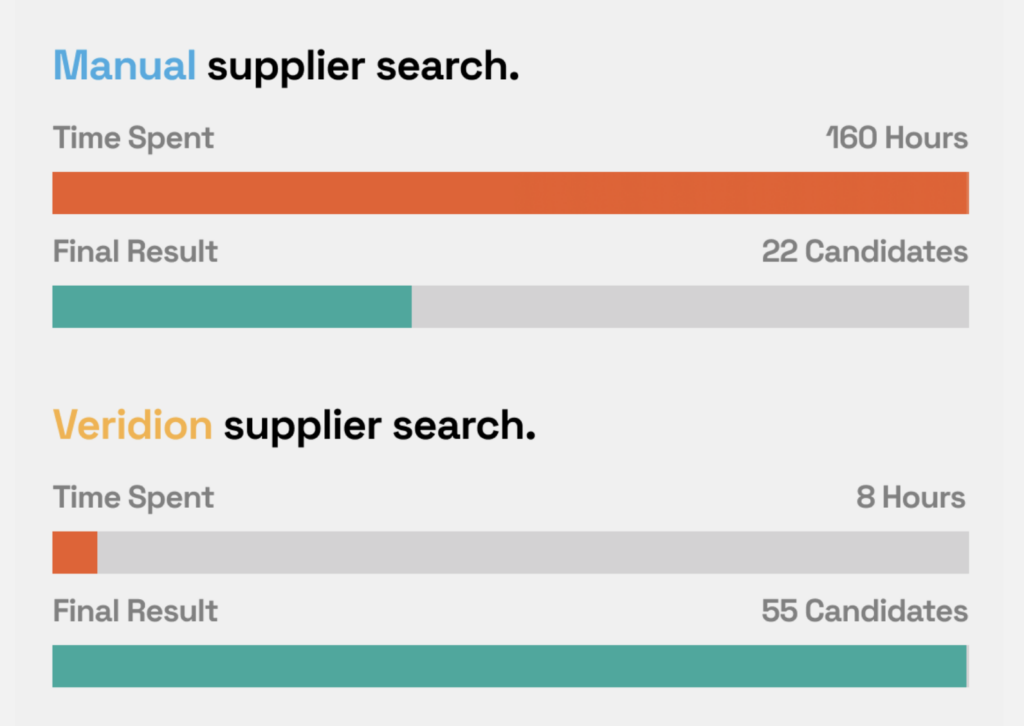
Source: Veridion
These results leave no doubt that AI-powered insights are the future of procurement.
That’s why you need to be on the lookout for AI when choosing your procurement platform and supporting tools.
Supplier performance management features help companies evaluate and monitor their strategic and transactional supplier relationships continuously.
Tracking key performance metrics like on-time delivery, quality of goods or services, and cost-effectiveness enables informed decisions on whether to maintain, renegotiate, or replace suppliers.
However, research by SpendHQ reveals a broader issue: 74% of companies still rely on spreadsheets to track KPIs and other procurement metrics.
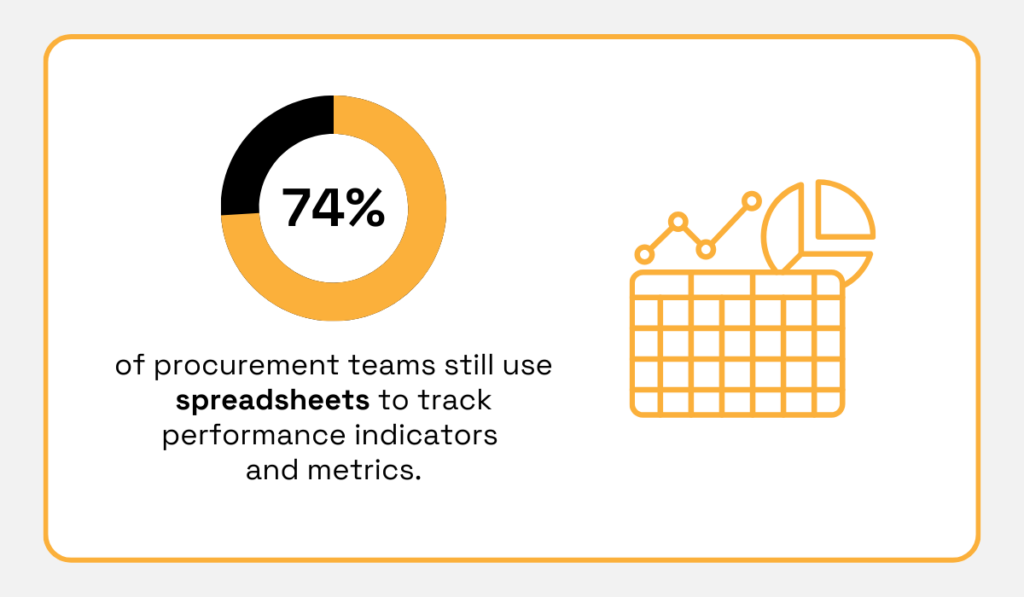
Illustration: Veridion / Data: SpendHQ
These findings highlight a widespread lack of procurement platforms, and the resulting gap has clear consequences.
Namely, KPMG’s report shows that nearly half of the surveyed companies have little to no insight into supplier performance.
Without robust performance management tools, businesses can’t gain a holistic view of supplier performance and separate top-performing suppliers from inconsistent ones to drive cost savings.
Naturally, not every procurement platform has to track supplier transactions at the same level of detail, but it should incorporate basic supplier evaluation tools, such as standardized forms.
For instance, supplier performance management software like Tradogram keeps things simple and intuitive.
You can rate every interaction based on key quality, compliance, and reliability considerations, as well as add quick notes for future performance reviews.
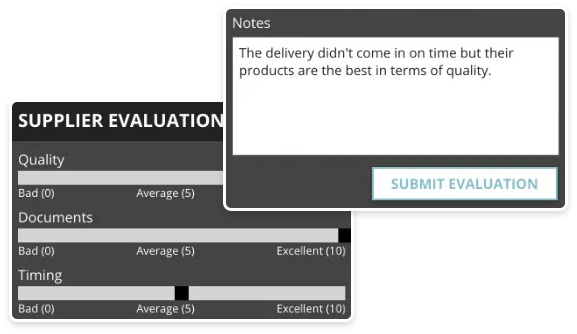
Source: Tradogram
The bottom line is that you need to make sure you’re choosing a solution that covers all supplier evaluation criteria that are critical to your organization.
Another important point is that you can see at a glance how your suppliers perform in specific areas and compare them to each other.
Axis Group’s custom-made solution is characterized by an informative dashboard with crucial performance ratings listed in the topmost area but also complemented by a visual breakdown.
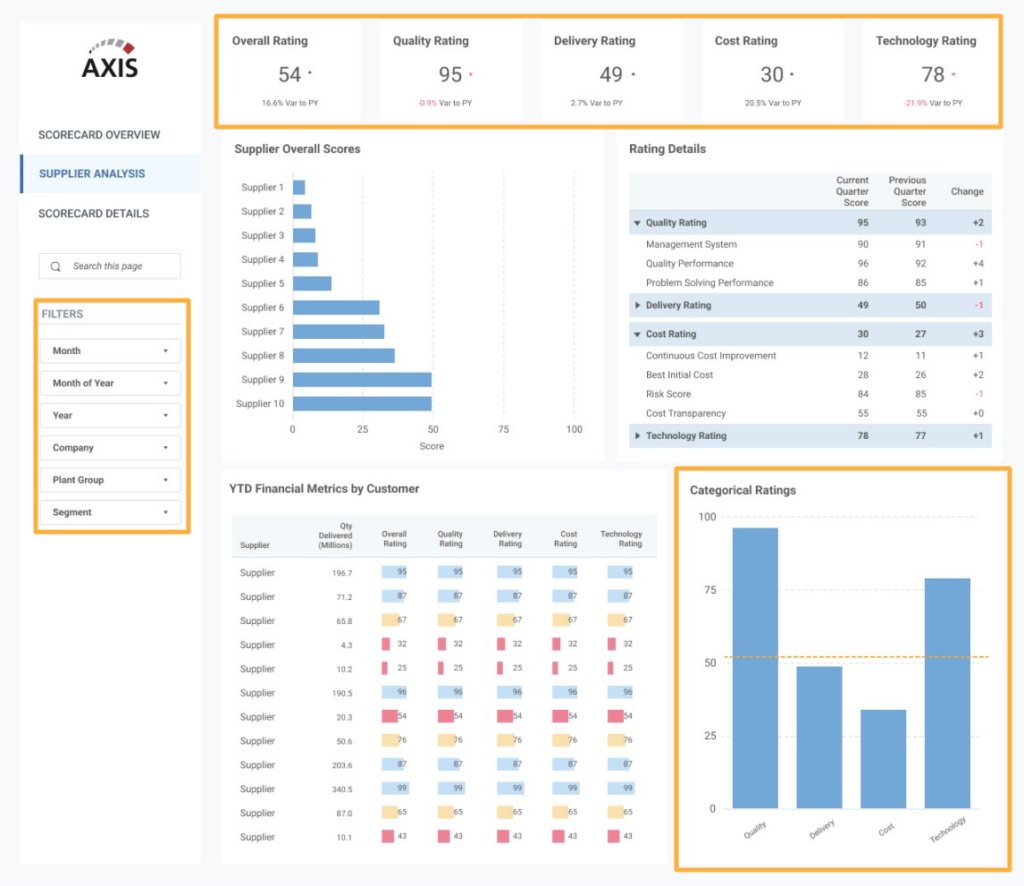
Source: Axis Group
Data is the foundation of objective supplier evaluation, and it serves as a crucial guidepost for both buyers and suppliers.
Gary Gustafson, an expert in developing supply chains for the power sports industry, agrees, highlighting the role of comprehensive supplier scorecards.
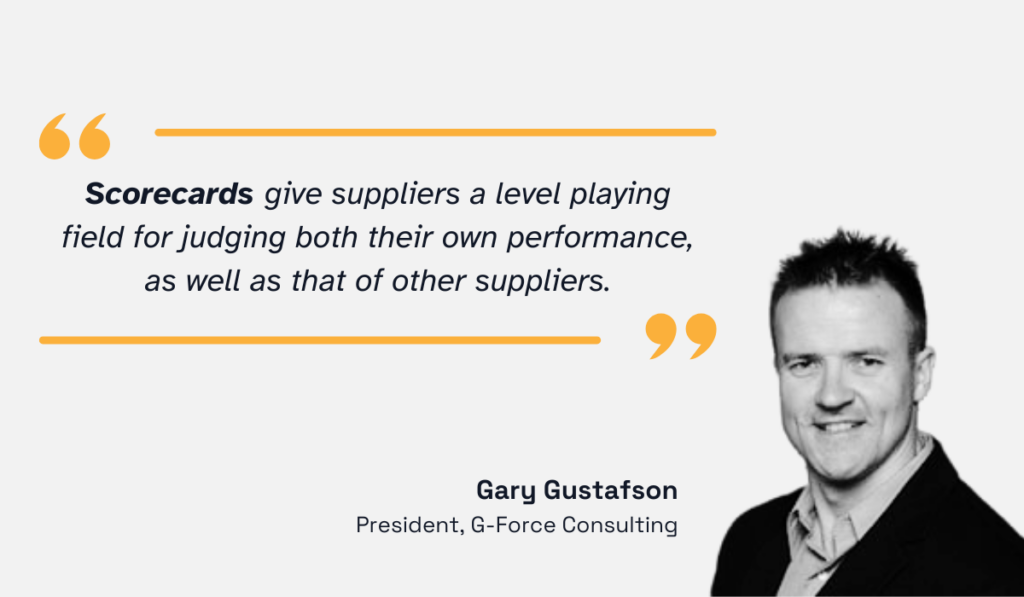
Illustration: Veridion / Quote: Smartsheet
Greater insight into supplier performance helps you address weak spots and optimize operations, making it an invaluable feature of every procurement platform.
Procurement platforms equipped with risk monitoring features help companies identify and mitigate potential risks across their supplier base.
Supplier risk management typically involves monitoring for:
Given that early risk detection builds supply chain resilience and ensures business continuity, it’s no surprise that the vendor risk management market is poised for rapid growth.
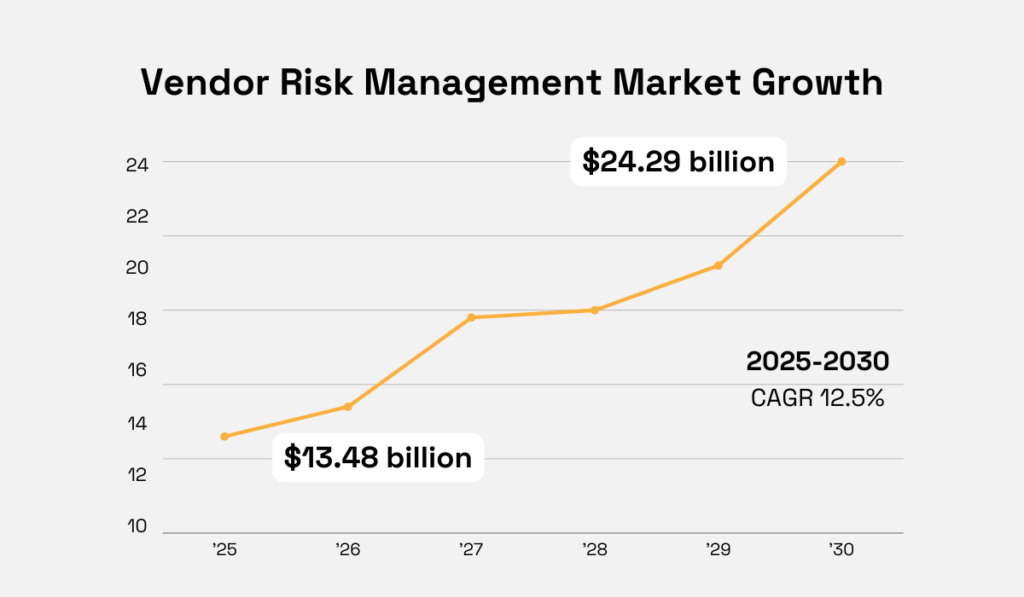
Illustration: Veridion / Data: Mordor Intelligence
Working with suppliers means constant exposure to unexpected sources of risk, meaning your procurement platform needs comprehensive risk monitoring capabilities.
Supplier relationship management platforms like HICX capture data on several levels, providing detailed risk assessments by risk level or region.
The dashboard also highlights data security and reputational risks as separate categories.
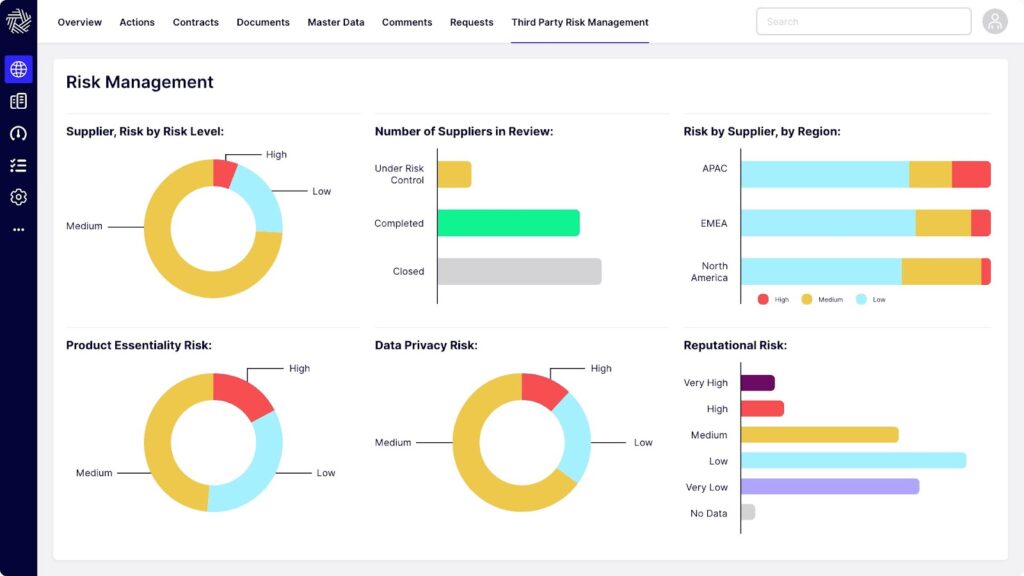
Source: HICX
In addition to providing granular insights into TPRM data, risk monitoring features typically include real-time alerts.
Enabling alerts ensures that your procurement team is always informed and can swiftly adopt measures to minimize the impact of any risk before it affects your operations.
As shown in the video below, you can also opt for AI-powered tools to help you flag specific risk events in real time, access all relevant details, and prioritize accordingly.
Source: Kavida AI on Youtube
For easier navigation, real-time alerts on issues like delayed shipments, worsening geopolitical circumstances, or performance problems are linked to specific orders and suppliers.
However, don’t forget that risk monitoring features need to align with wider TPRM programs and should enable more than simple prediction.
As pointed out by Phillip Addison, Third-Party Cyber Risk Manager at the Hershey Company, your main aim should be to secure actionable risk intelligence.
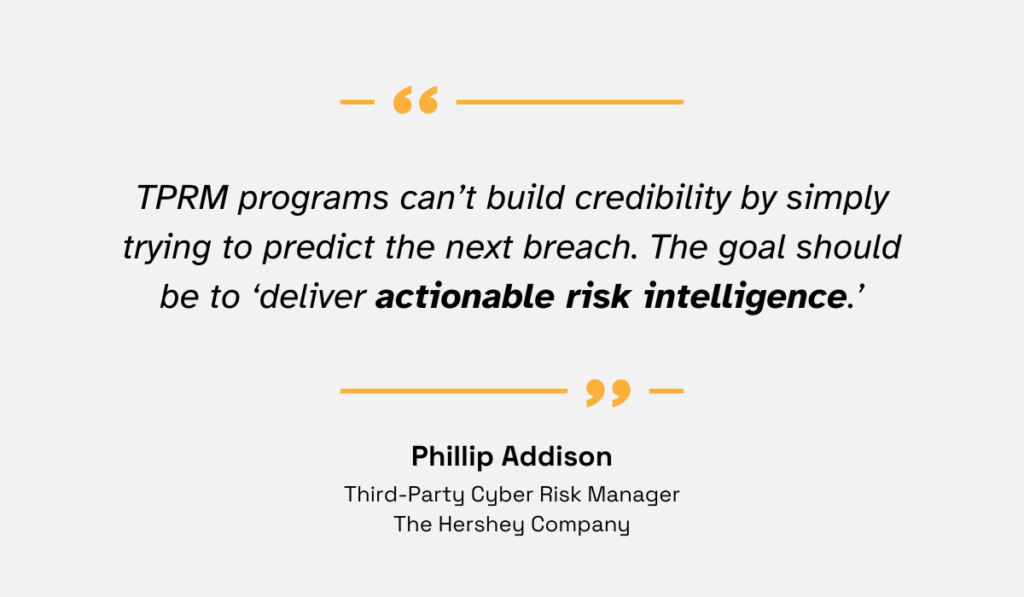
Illustration: Veridion / Quote: LinkedIn
By prioritizing the right risk monitoring features, you can quickly identify high-risk vendors and adjust your strategy to maintain stability, ensure compliance, and optimize operations.
Investing in spend management capabilities helps companies monitor and control spending by tracking budgets, purchase orders, and contracts.
Better control over spend leads to stronger financial performance, which makes these features a key priority for many businesses when selecting procurement platforms.
Ironically enough, a Payhawk study shows that 28% of procurement professionals cited ineffective software as one of their biggest spend management challenges.
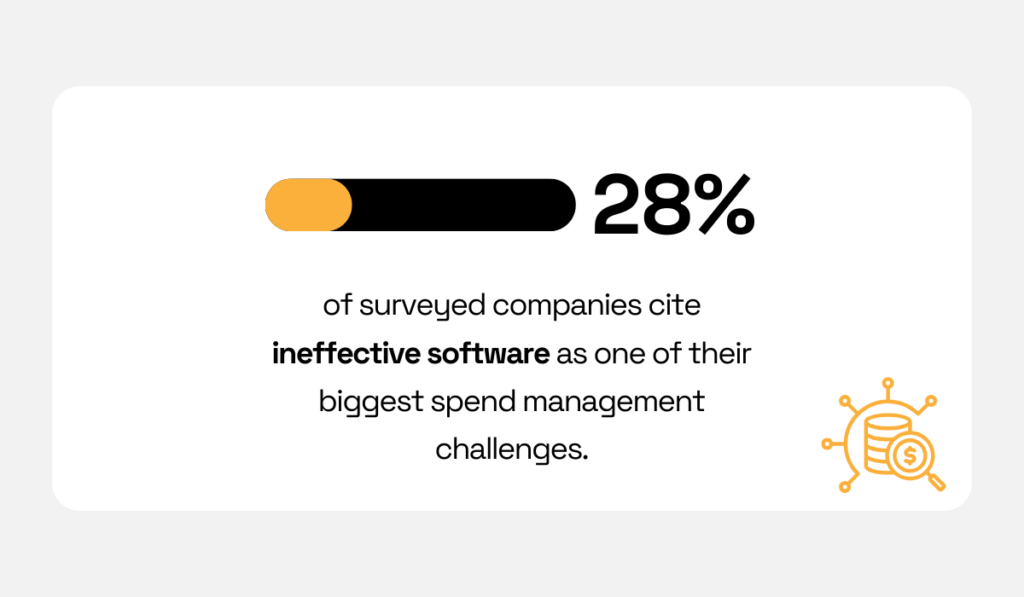
Illustration: Veridion / Data: Payhawk
What’s causing this issue?
Real-time spend tracking and analytics facilitate expense categorization, helping you identify trends and adjust purchasing for better deals.
Approval limits and similar features prevent overspending and keep budgets on track.
Since these tools clearly add value, the real challenge is likely ease of use—if the procurement platform is too complex or cumbersome, teams will struggle to fully leverage its benefits.
Dan Brogan, Chief Procurement Officer at GCI, says as much, listing an easy-to-use interface as his company’s top-three priority.
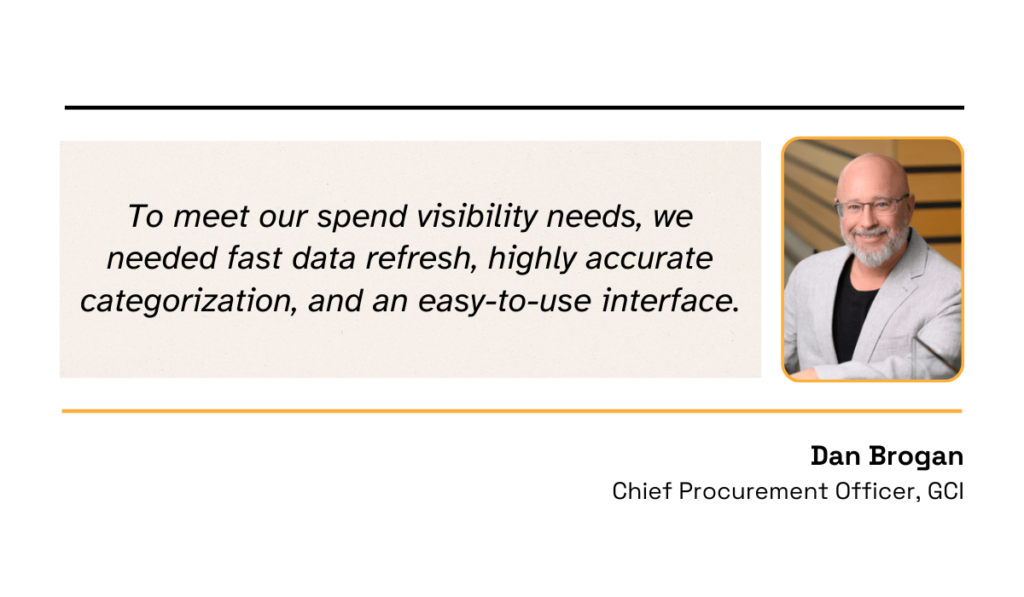
Illustration: Veridion / Quote: SpendHQ
When you’re using software, you want all the information at your fingertips, from how much spend you’re managing to visibility into specific categories.
Take a look at how Levadata does it: Users can switch between different views below, but all the crucial figures are at the top.
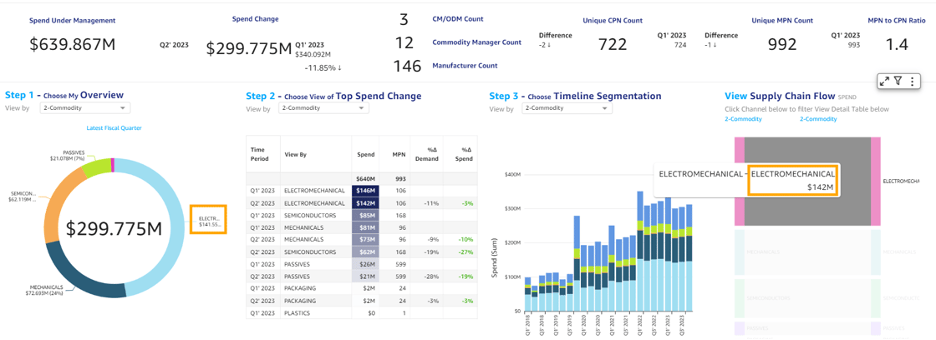
Source: Levadata
Still, too much information in one panel can be difficult to navigate.
This is why SpendHQ, Brogan’s solution of choice, took a slightly different approach.
The platform divides the spend data across numerous tabs while robust spend intelligence features enable you to automate actionable priority insights and stay ahead of the curve.
In the example below, the focus is on spend gainers, from top suppliers to the largest categories and subcategories.

Source: SpendHQ
Ultimately, the most effective spend management solutions will strike a balance between depth of insight and ease of use, ensuring that procurement teams can act on data without being overwhelmed by it.
An effective procurement platform has to integrate smoothly with an organization’s existing enterprise systems and other tools to enable seamless data sharing.
Without integration with your ERP, CRM, and financial tools, manual data entry becomes unavoidable—wasting time and increasing the risk of errors.
There’s a reason why the lack of integration with other systems ties for the top spot as the leading cause of failed digital transformations.

Illustration: Veridion / Data: Userlane
Keep in mind that fragmented data also limits your ability to gather and act on the most up-to-date insights.
According to SpendHQ, this is a widespread issue—roughly 75% of respondents are unable to refresh their procurement data daily or in real time.

Illustration: Veridion / Data: SpendHQ
This, in turn, affects cross-departmental coordination and hinders data-driven decision-making.
While these findings may suggest reliance on spreadsheets or legacy software, they can also point to a poorly researched procurement platform that now limits your options.
Ivalua’s Chief Marketing Officer, Alex Saric, warns that just because a procurement platform is marketed as an integrated suite doesn’t mean it truly is.

Illustration: Veridion / Quote: Procurement Magazine
To put it differently, you need to look beyond the surface-level claims and ensure that the solution is truly a good fit for you.
For example, SAP Ariba’s cloud-based procurement system has a dedicated page on integrations, but the community blog article gives you a quicker overview of what to expect.
For starters, you can use a range of solutions that integrate seamlessly across its suite.
Since SAP Ariba doesn’t rely on batch updates but continuous data sharing, you can be sure of real-time alignment.
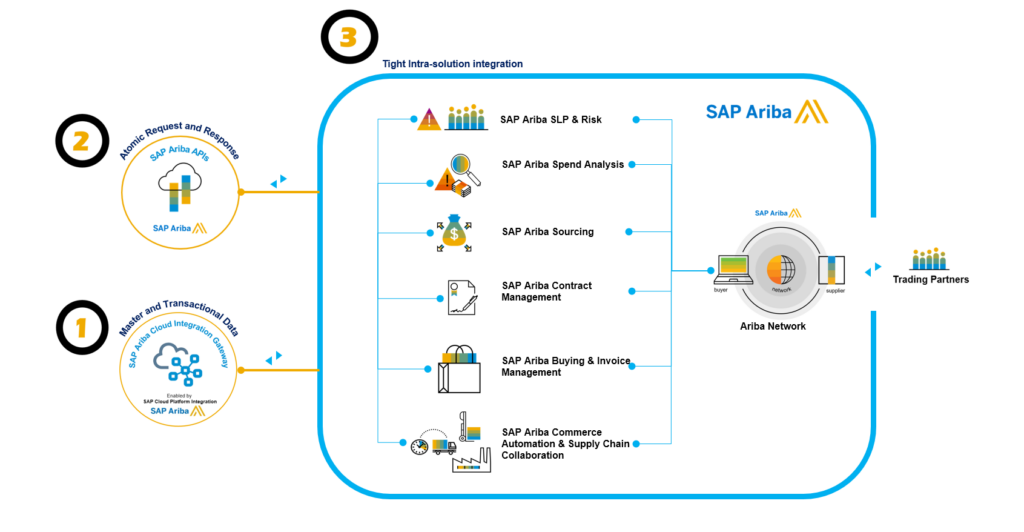
Source: SAP Ariba
Additionally, the platform boasts a vast framework of over 233 APIs, enabling the automation of complex workflows and enhanced customization.
While company reputation and approach are important, don’t forget to check reviews on platforms like Capterra to gain more insight.
Ultimately, seamless integrations provide a more holistic view of company operations, facilitating smarter decision-making and driving better business outcomes.
Dealing with sensitive procurement data means security is paramount when choosing a procurement platform.
Data security has always been a major procurement concern, but it is even more so today, when emerging cybersecurity threats worry roughly one-third of procurement leaders and decision-makers.
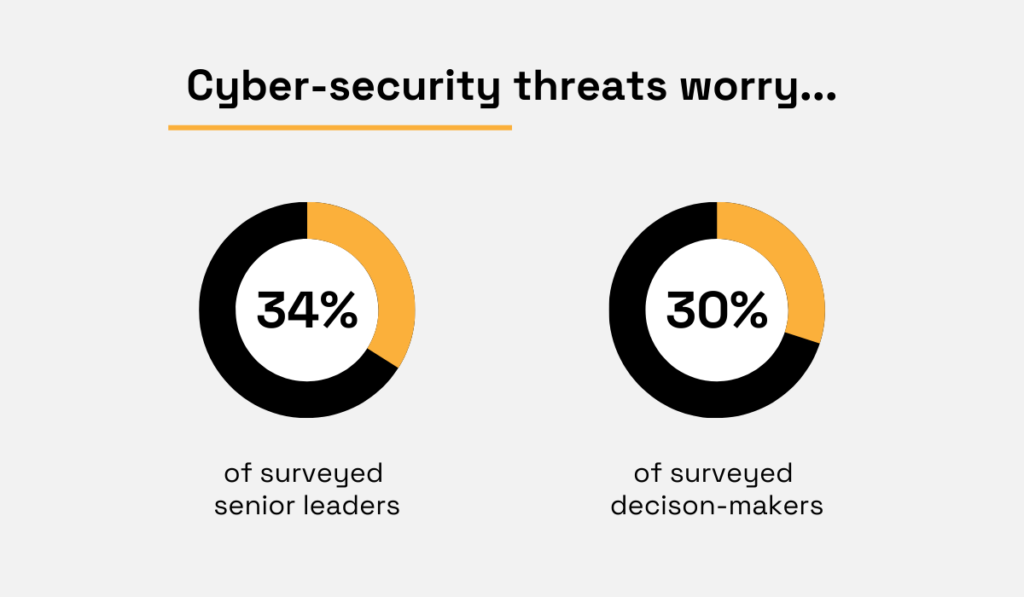
Illustration: Veridion / Data: Amazon Business
Contrary to these findings, the security measures don’t necessarily match the level of worry.
A 2017 report shows that only 17% of respondents consider their companies highly effective in mitigating third-party risk.
Knowing all this, how do you build confidence in your systems?
Although not a product feature exactly, a starting point in safeguarding customer and supplier information is basic compliance with regulations such as GDPR or CCPA.
One of the GDPR’s key data protection principles extends to implementing technical and organizational measures to secure the personal data you’re holding and processing.
As such, procurement platforms typically offer features like data encryption and multi-factor authentication.
For instance, the UK Foreign, Commonwealth & Development Office (FCDO) is using Jaggaer’s portal, which incorporates a robust two-factor authentication (2FA) process.
The steps outlined below are a proven way of countering unauthorized access risks.
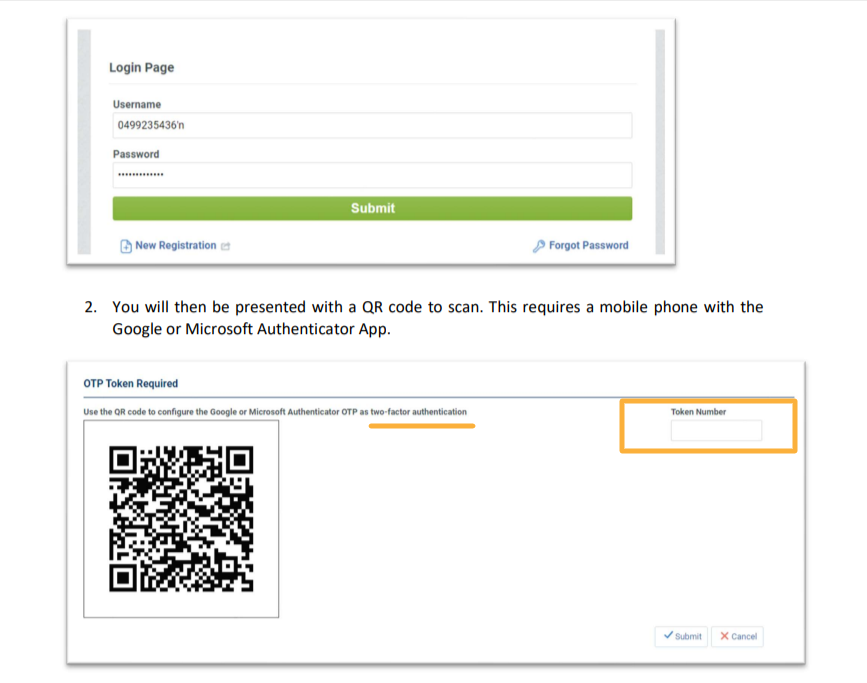
Source: FCDO
Another set of features is related to the Role-Based Access Control (RBAC) approach, which enhances supplier data security by limiting access to sensitive data based on user roles.
Access control is a common measure when developing supplier databases, but it can have a broader application.
In Tradogram’s example, this means controlling user access across dashboard views.
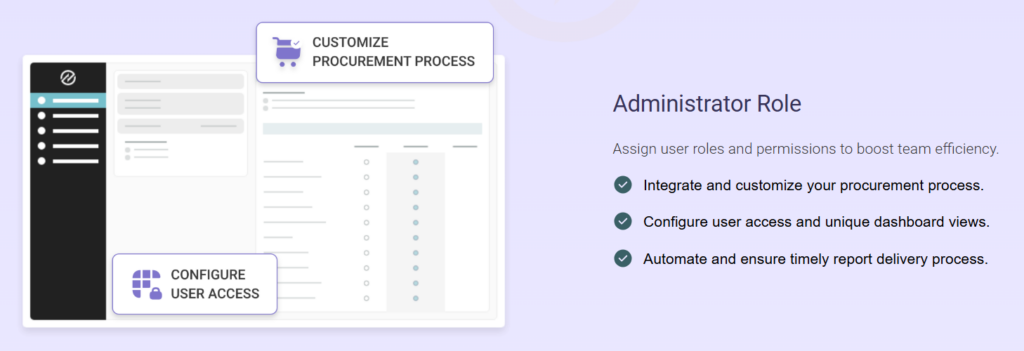
Source: Tradogram
Another key practice for maintaining strong supplier data security is regularly reviewing user permissions and conducting security audits.
This will help identify vulnerabilities, reinforce internal controls, and ensure compliance with data protection regulations.
To sum up, procurement platforms with built-in security features are your best bet against cyber threats and will allow you to focus on your core operations with confidence.
Modern procurement platforms do more than process transactions—they create strategic advantage.
Finding the right solution isn’t always straightforward, but the key features we outlined here offer a clear roadmap.
From AI-driven insights and performance management to airtight data security, the best procurement platforms streamline workflows, reduce risk, and deliver actionable intelligence.
As quoted, the features we described don’t necessarily need to be found in a single platform.
Rather, investing in an easy-to-use, feature-rich platform that’s easily integrated with other systems and supporting tools ensures long-term efficiency, flexibility, and resilience.
Now is the time to take the next step—assess your current systems and explore solutions that drive real, measurable impact.